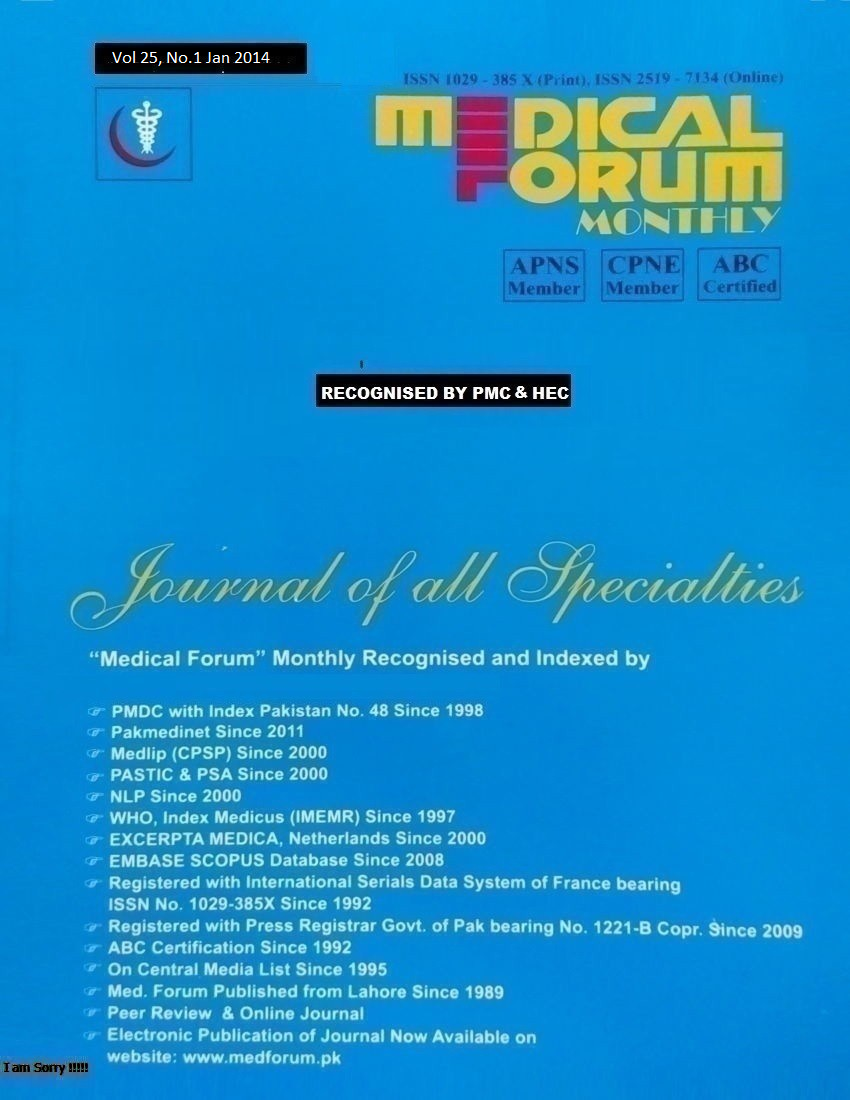
13. Effect of Thiamine on Glycemic Control in Induced Diabetic Rat Model
1. Muhammad Bachal Pandhiani 2. Maria Kazi 3. Saif-ur-Rehman 4. Navaid Kazmi
5. Salman Ahmad Farsi Kazi 6. Haji Khan Khoharo
1. Asstt. Prof. of Anatomy, Al-Tibri Medical College, Karachi 2. Asstt. Prof. of Biochemistry, Al-Tibri Medical
College, Karachi 3, 4. Asstt. Profs. of Physiology, Faculty of Medicine and Allied Medical Sciences,
Isra University, Hyderabad 5. Asstt. Prof. of Forensic Medicine, Faculty of Medicine and Allied Medical Sciences,
Isra University, Hyderabad 6. Asstt. Prof./Consultant Physician, Dept. of Physiology/Medicine, Faculty of Medicine and Allied Medical Sciences, Isra University, Hyderabad
ABSTRACT
Objective: To evaluate the effect of high dose thiamine on postprandial blood glucose (PPBG) and hemoglobin A1C levels in induced diabetic albino rat model.
Study Design: Experimental/Analytical study
Place and Duration of Study: Animal House, Isra University Hyderabad from March to October 2013.
 Materials and Methods: Forty adult albino rats were divided into four groups; Group I. Controls receiving normal diet, Group II. Controls receiving thiamine fortified diet, Group III. Diabetics receiving normal diet and Group IV. Diabetics receiving thiamine fortified diet. Diabetes mellitus was induced using Streptozocin. Thiamine was given at a dose of 1.6 g/kg body weight. Venous blood samples were drawn from animal’s tail with a small bore cannula before and after 12 weeks of experimentation. The PPBG levels and Glycosylated HbA (HbA1c) were measured. The data was converted into database and analyzed on SPSS version 21.0 by ANOVA and Tukey-Kramer`s test. A p-value of ≤ 0.05 was taken statistically significant.
Materials and Methods: Forty adult albino rats were divided into four groups; Group I. Controls receiving normal diet, Group II. Controls receiving thiamine fortified diet, Group III. Diabetics receiving normal diet and Group IV. Diabetics receiving thiamine fortified diet. Diabetes mellitus was induced using Streptozocin. Thiamine was given at a dose of 1.6 g/kg body weight. Venous blood samples were drawn from animal’s tail with a small bore cannula before and after 12 weeks of experimentation. The PPBG levels and Glycosylated HbA (HbA1c) were measured. The data was converted into database and analyzed on SPSS version 21.0 by ANOVA and Tukey-Kramer`s test. A p-value of ≤ 0.05 was taken statistically significant.
Results: The PPBG and HbA1c levels were found statistically significant in groups I vs. III (p=0.0001), I vs. IV (p=0.0001), II vs. III (p=0.0001), II vs. IV, (p=0.001) and III vs. IV (p=0.024) at 12th week of experimentation. The study shows significant reduction in the PPBG and HbA1c levels of rats taking thiamine compared to controls (p=0.001). Significant differences in HbA1c levels were observed between control groups I and II vs. experimental groups III and IV (p=0.024) (p=0.0001) respectively. A highly significant difference in HbA1c was observed in rats given thiamine fortified diet compared to those not given (p=0.001).
Conclusion: The thiamine improves glucose metabolism in induced diabetic rat models, hence it is concluded that the thiamine may be given along with anti- diabetic drugs to overcome defects of glucose metabolism.
Key words: Thiamine, Glycemic control, HbA1c, Diabetic rats
